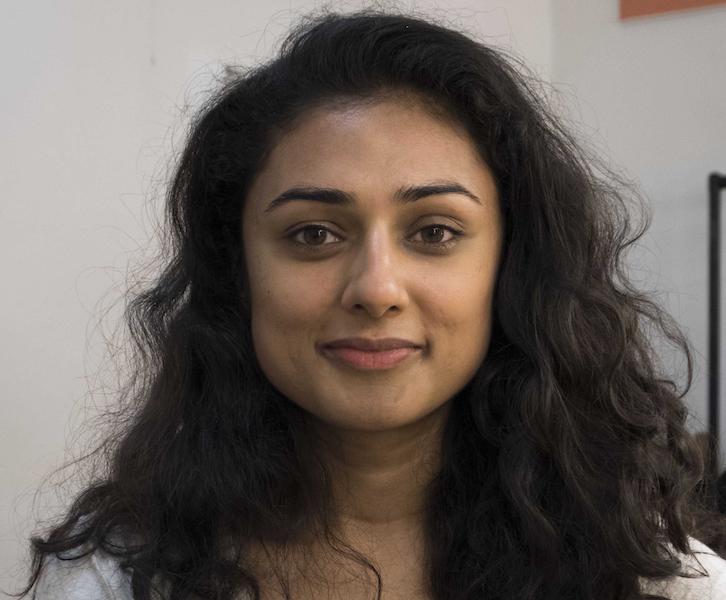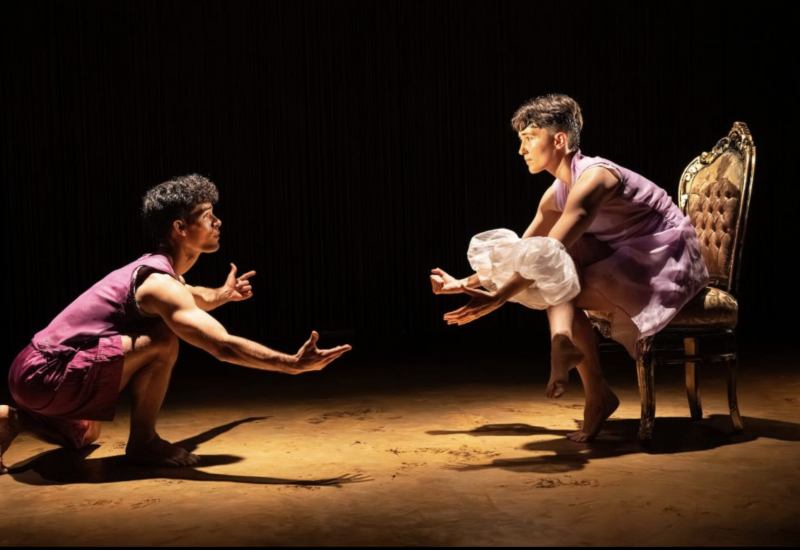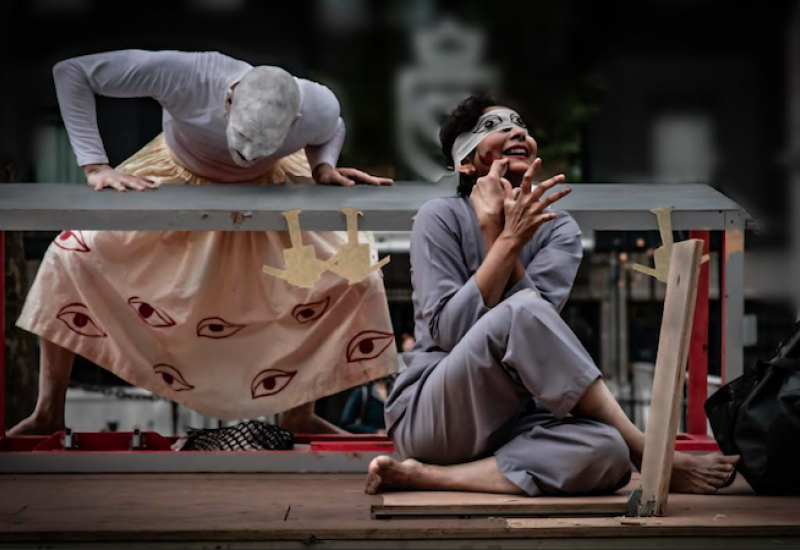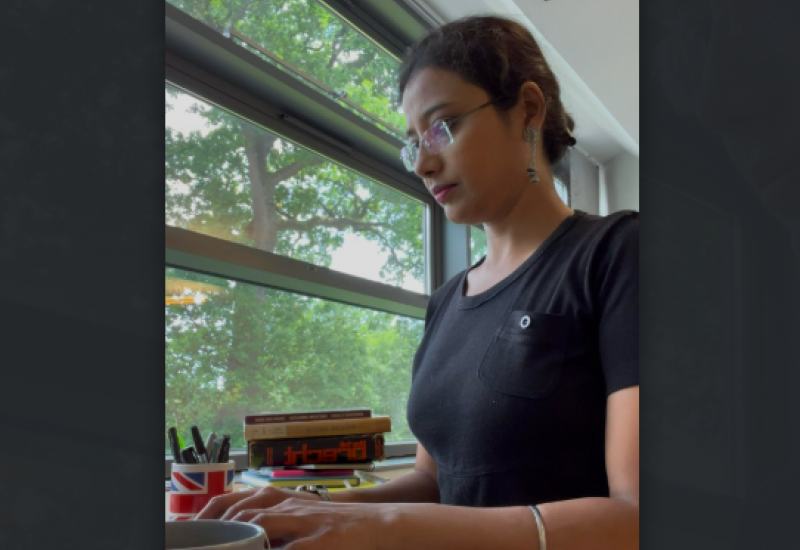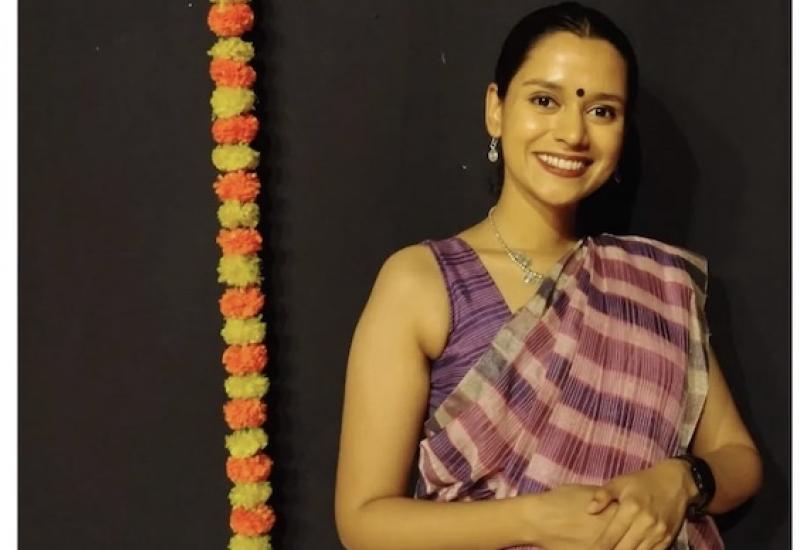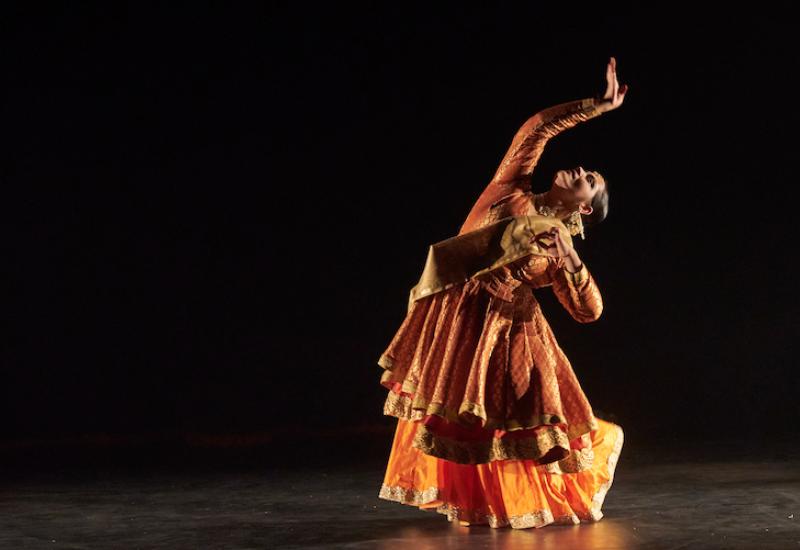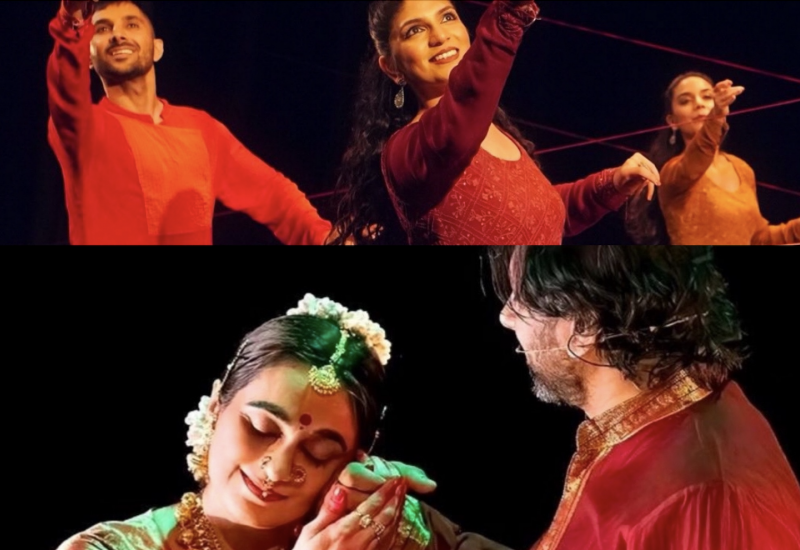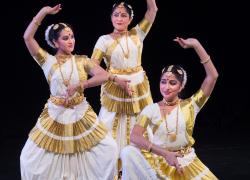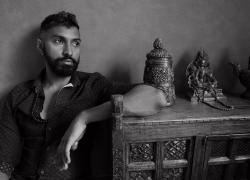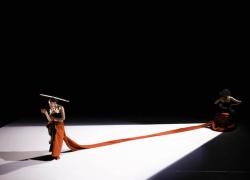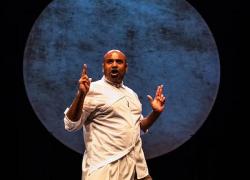Dance Dialogues
Seeta Patel with NYDC and Kadam Dance place contemporary and classical South Asian dance on an equal footing in the Dance Dialogues project running currently at Hymers College in Hull.
Three bharatanatyam-trained artists and three contemporary dancers (alumni of National Youth Dance Company, NYDC), are spending six days at a residency working with choreographer Seeta Patel on Dance Dialogues.
Resident Young Writer Shivaangee Agrawal is reporting on the project for Pulse.
This project is supported by Arts Council National Lottery Project Grants.
“6 Dancers, 6 Days and Systemic Change”
“Are we twisting on the dhim thaka?” We are now 2.5 days in but it still feels a bit surreal to see a contemporary dancer referring to shollukattu (the oral language of Carnatic rhythm). And I can’t deny it; there’s a part of me that feels deeply satisfied to see the tables turned; to see contemporary dancers challenged by the demands of a bharatanatyam choreographer. Seeta Patel is in the studio with three bharatanatyam and three contemporary dancers to make a curtain raiser for her upcoming Rite of Spring production. This piece begins with a jathi , and both sets of dancers must work within the parameters of this rhythmic score.
The contemporary dancers have perhaps had a steeper learning curve over these first couple of days as they try and keep complex counts that run against the lilt of the spoken score, all the while absorbing as much as they can of the Carnatic/bharatanatyam terminology that’s flying across the room. They’re also having to read an unfamiliar movement vocabulary in order to respond with their own movement suggestions. I think (hope!) this kind of in-depth and in-creation exposure to bharatanatyam is what will dissolve the perceived ‘otherness’ of it by the contemporary dance world. This piece is juxtaposing the virtuosities of bharatanatyam and contemporary dance and in doing so, also giving audiences the important opportunity to appreciate the richness of bharatanatyam as simply another movement form, unburdened by a mystified history and culture.
Sadler’s Wells’ National Youth Dance Company (NYDC) is hosting this project and last night organised for Seeta to speak to the 38 young dancers that form the company. Questions ranged from the predictable (“How does bharatanatyam compare to kathak?”) to the poignant (“Is it controversial what you’re doing?) to the straight-out salient (“is it possible to improvise within bharatanatyam?”)
This project was conceived with lofty goals of systemic change within the dance world – watch this space.
On The Job
Binaries dissolved a little bit today as the new section of the piece began in a tight cluster of bodies, too close to be doing full adavus or floorwork. One body initiates a movement and the others respond. Limbs touch, heads rest on calves, the group breathes as one unit. The bharatanatyam dancers are challenged. They have to go far beyond just executing or enjoying their movements; they have to fill their movements with breath, they have to sense the breath of those around them, they have to respond to the touch that they receive from others and yield into another body. All while holding a strong core because this is happening on the floor and they can’t rely on an araimandi (fundamental demi-plié position) for groundedness. These are some of the skills that I came out of contemporary dance school with, and those which I feel are really necessary in order for me to explore working with others, working with other movement and ultimately also explore bharatanatyam. However I felt my usually strong advocacy for a contemporary dance education wobble as I watched these bharatanatyam dancers learn well on the job. Sure, it took a lot of time for them to grasp the tactile sensitivity that Seeta was after, but her specific directions and demands put these bharatanatyam dancers through an effective education. I dare to imagine how different the world will be when bharatanatyam dancers have abundant opportunities to work under exciting choreographers.
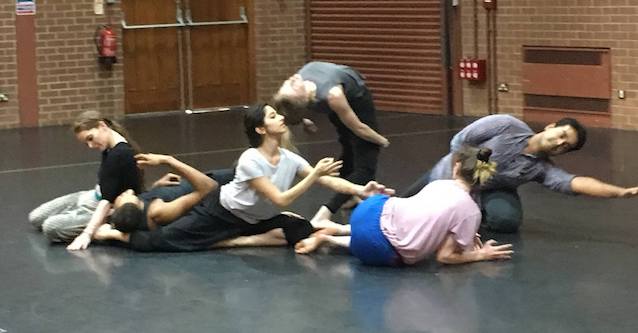
Meanwhile in the building next door, Botis Seva is working with young dancers from National Youth Dance Company to make a piece that will premiere on the UK’s biggest stages. Yes, things are happening on a wholly different scale here - his piece will be a full-length work, he has a year to work with the dancers, and there are 38 of them. What do Botis and Seeta share in common? More tomorrow.
“Form or Influence”
In one of Botis’s studios, eighteen equidistantly-spaced young dancers are snaking their way across the floor in identical crouched positions. Knees are held tightly together, arms by sides, gazes forward. Their paths curve and loop. Without warning, five or six seemingly random dancers abandon this crouched swarm and execute an explosive floor-work sequence in unison, before rejoining the group seamlessly. This disturbance is followed by another and all the while the crouched snaking continues. Meanwhile in another studio, 20 dancers are standing facing the audience in a bent-knee stance, backs slightly hunched. On a specific music cue, they launch into a complex sequence of upper body gestures. The movements are precise and in unison, and occasionally combined with deep, voiced exhalations that are also precisely timed. It is impossible to tell which dancers are new to this movement vocabulary, and which are very familiar with it and it’s clear that this sort of uniformity is strongly intended. National Youth Dance Company takes on a different choreographer each year who works with that cohort of company dancers in a series of residencies. The dancers expect to fully commit to the chosen choreographer’s style and vocabulary, and as a result NYDC manages to stage vastly different shows each year.
Where does an Indian classical form like bharatanatyam fit into this kind of industry? Is it limited to only the handful of dancers who have trained vigorously in it? Can it ever be the ‘resident style’ of a company of contemporary dancers for a year, and if so, in what version of itself? Can it ever manifest in the kind of impactful mass ensemble work that I witnessed in Botis’ studios?
Seeta is spearheading the creation of ensemble bharatanatyam work in the UK (Occupying The Fifth, 2018; Rite of Spring, 2019) and believes that there is much to be mined from the inherent richness of classical bharatanatyam before it takes on a contemporary derivation. To me, it often seems that bharatanatyam has not ‘gotten as far’ as styles such as hip-hop, which are now embedded in the network of influences that contemporary dance draws on; bharatanatyam is still very much a form rather than an influence, and as a result unable to permeate into contemporary work. But I question whether this is just a matter of time, or whether bharatanatyam fundamentally resists derivation. Does the fun of choreography end when the choreographer is no longer referencing the rules that are set in the classical codification? I would like to believe that there’s only one way to find out, which is to indiscriminately encourage all study and exploration of the form.
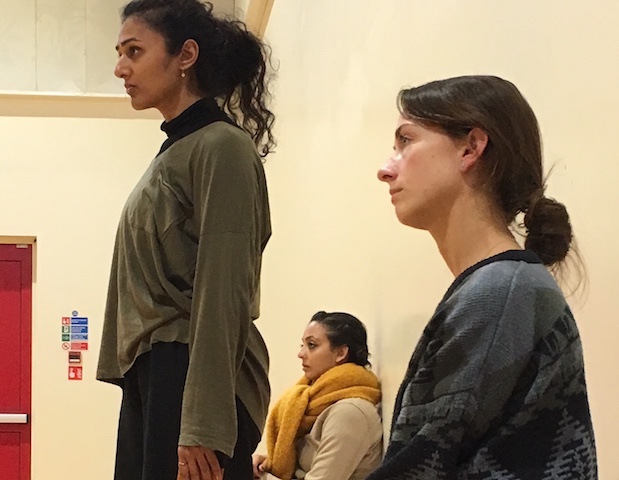
Equal Play
‘An equal playing field’ was a term mentioned several times during the week. The contemporary dancers seemed keen to demonstrate an awareness of the ‘unequal playing field’ that bharatanatyam and contemporary dance were meeting on; it had become clear to them that their bharatanatyam colleagues had access to significantly fewer professional and paid opportunities. At the end of the final-day, when all the dancing was over and the bodies were cool, one contemporary dancer chose to speak about this ‘playing field’ and in doing so, opened the floor to a passionate discussion.
"Is it ok to dibble dabble in different styles and then call them your own? I don’t think so.” The tangible issue of pay and opportunities dissolved into the intangible issues of cultural hierarchies and appropriation. When does an exchange stop being about ‘taking inspiration’ and when does it start becoming cultural appropriation? At what point does a contemporary dancer know enough about a style to use it in their movements?
“Inspiration and appropriation are two different things,” says Seeta. Appropriation results in something reductive; the richness of bharatanatyam is lost when somebody uninformed takes and uses a superficial aspect of it. She outlines the need for a respectful exchange and this was indeed one of the aims of this project to begin with. This week in the studio, contemporary dancers and bharatanatyam dancers together built a piece without the need to mimic each other’s movement styles; both sets of dancers were able to use their expertise to create a thrilling performance that remained free from tropes and exoticisation.
However, even just for this one week, were the playing fields really levelled? Arran pointed out that while he felt like a dancer in the broader sense of the word, he felt that his colleagues based their identity strongly upon bharatanatyam. For me, this hits the nail on the head. Contemporary dance feels no duty to history, nor to itself; contemporary dancers are individuals with the freedom to carve their own artistic destiny. We on the other hand - in seeking respect for bharatanatyam, in seeking exchanges that do not treat it reductively, in championing its richness - are representatives for a form, and that is quite a weight to carry around.
Read the dancer profiles here.
Dance Dialogues Photos Credit: Sanjeevini Dutta.

